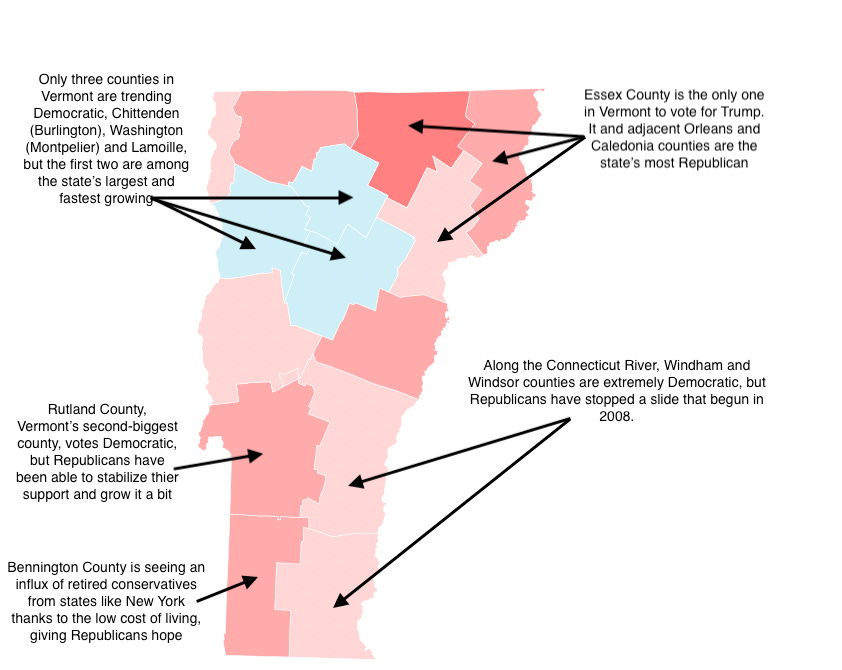If Utah is the country’s most Republican state, then Vermont is the most Democratic. Always the first three electoral votes called for the Democratic candidate on Election Night, tiny Vermont is not only a Democratic bastion but also a Progressive one.
That wasn’t always the case. From the Civil War until the 1980s, Vermont was a Republican stronghold, one of only two states – Maine is the other – that voted against Franklin D. Roosevelt in all four elections.
The change happened swiftly. Vermont’s population hollowed out in the 1960s and 1970s, and a new, younger liberal crowd escaping the turmoil of major cities like New York moved in search of cheap cost of living and clean air. Its proximity to Canada made it a popular place for draft dodgers during the Vietnam War. Among those who relocated was a Brooklyn Jew named Bernie Sanders, who later became Mayor of Burlington, Vermont’s lone member of the House of Representatives and the state’s now-senior senator, as well as a presidential candidate in 2016 and 2020.
Today, Vermont gives Democratic presidential candidates over 60 percent of the vote, and Democrats have a lock on the state legislature and nearly every state office – save one. Only two Democrats have served as governor of Vermont since 1980 – Howard Dean from 1991-2002 and Peter Shumlin from 2010-2016. Republicans have otherwise been able to not only win the office but often win it in a landslide. Current Republican Gov. Phil Scott won 68 and 71 percent in the last two elections, even as Democrats were blowing away their opposition elsewhere on the ballot.
Is there any hope for Republicans for any other office in Vermont?
Keep reading with a 7-day free trial
Subscribe to Nick Rafter Writes to keep reading this post and get 7 days of free access to the full post archives.






